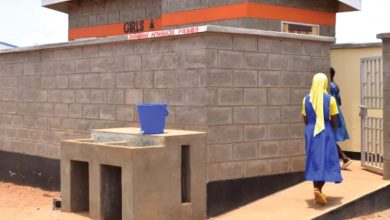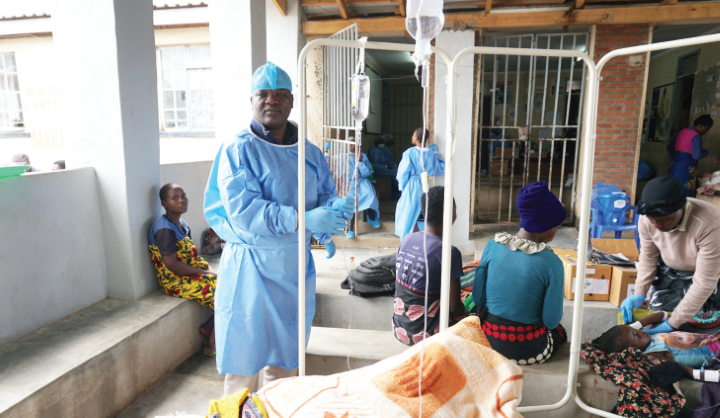Where is safe water in Malawi?
 Though figures show that between 1990 and 2009, access to safe water in the country has significantly improved from about 47 percent to 83 percent, Malawians continue to struggle to get safe water. What is the problem?—Ephraim Nyondo finds out.
Though figures show that between 1990 and 2009, access to safe water in the country has significantly improved from about 47 percent to 83 percent, Malawians continue to struggle to get safe water. What is the problem?—Ephraim Nyondo finds out.
Malawi is doing quite well on improving its people’s access to safe water.
That is if you listen to a 2012 report by Unicef and World Health Organisation (WHO).
The report shows that between 1990 an 2010, access to safe water in the country significantly improved from about 47 percent to 83 percent.
Interestingly, at this rate of change, the projection shows that by 2015, about 94 percent of the population are likely to have sustainable access to improved water sources.
Arguably, this implies that Malawi will have exceeded the MDG target of about 74 percent. This is good news.
But for Mary Malire, a resident of Chimwankhunda Township in Blantyre, it is not.Â
First, she hardly understands these figures of progress, and neither does she know Unicef and WHO.
All she knows is that fetching water for her domestic chores at home has never been easy with each passing year.
“There is a water kiosk just 200 metres from my house. It was built two years ago, but we hardly get water from it.
“The taps usually flow at night with low pressure. There are usually long queues of empty buckets waiting. But often, during day, it is dry,†she complains.
But because water is life—for cooking, washing, cleaning and bathing—she still has to find some.
“We depend on the wells along Chimwakhunda dambo. That is where we draw water for our daily survival,†she says.
The water is brownish, a sign that it is not clean. On its banks, there is litter carelessly disposed of. During the rainy season, the litter becomes debris on its way to Malire’s water source.
“It’s not healthy at all. We are living dangerously,†she says.
And yet she is not the only one.
More people lack access to safe water
Across the country, stories of women and girls waking up at night searching for water and also drawing water from unsafe sources are quite common.
Such stories are shared by residents of Chikanda in Zomba, Ndirande in Blantyre, Zolozolo in Mzuzu, Kawale in Lilongwe and Baka in Karonga.
The commonality of such stories does explain why, despite progress in access to safe water as espoused in the Unicef and WHO report, there has been less progress on sanitation.
The country remains off-track from achieving the sanitation Millennium Development Goal target. The report shows that 51 percent of the population has access to an improved sanitation source (49 percent in urban areas and 51 percent in rural areas) compared with 39 percent in 1990.
Currently, more than 10 percent of under-five children in the country die of bilharzia.Â
So, what is the problem? Why is it that despite increased access to safe water, Malawians, exemplified by Malire continue to struggle to get safe water?
A Joint 2011 Sector Review of the water and sanitation sector in the country identified that only 63 percent of water points were functional.
So, it is not just a question of water points that provide safe water. Rather, the capacity of those water points to serve the intended.
Richie Muheya, Minister of Irrigation and Water Development, says government understands the challenge of safe delivery of water in the system.
“One of which is that there are several similar schemes across the country where the combination of population growth and ageing infrastructure, mean there is an urgent need for rehabilitation and extension,†he says.
Of course, non-governmental organisations have already started to scale up their efforts.
For instance, WaterAid is partnering with AusAid to rehabilitate and extend a major gravity-fed water supply scheme in two separate districts of Nkhotakota and Ntchisi in Central Region.
The scheme, which includes the town of Mwansambo, close to Lake Malawi, consists of three main branches reaching down over several kilometres to villages and schools in two separate districts of Nkhotakota and Ntchisi, providing water for 38 000 people, although low sustainability has reduced this total substantially.
Built in 1983 with support from USaid, the existing scheme is in need of significant rehabilitation, with old pipes, leaking water, non-functional water-points, deteriorating water quality and a shortage of improved sanitation in the schools and communities.
Government, too, according to Muheya, is going the same direction.Â
“We are not just rehabilitating the old system, we are also exploring other alternative sources of water,†he says.
For instance, in Lilongwe, says Muheya, government is working with Lilongwe Water Board (LWB) to build a dam to increase water sources.
“We have realised an area along Diamphwe River. Soon, after liaising with donors, feasibility studies will begin,†he says.  Â
A similar project will be carried out in Blantyre.
“We have also realised land in Chiradzulu to build dams to increase the capacity of water generation,†he says.
But the question is: How long will such projects—which are still at a planning stage according the minister—take to roll out for people like Malire to stop drawing water from unsafe sources?
“We are working with different sectors to make sure that this is done in the quickest time. We are also working with those dealing with climate change because some of the challenges facing the water sector emanate from the changing climate,†says the minister.
Surely, if these plans hit the right chord at the right time, the 2012 report by Unicef and WHO that Malawi is doing well on accessing safe water will make more sense for people like Malira.





